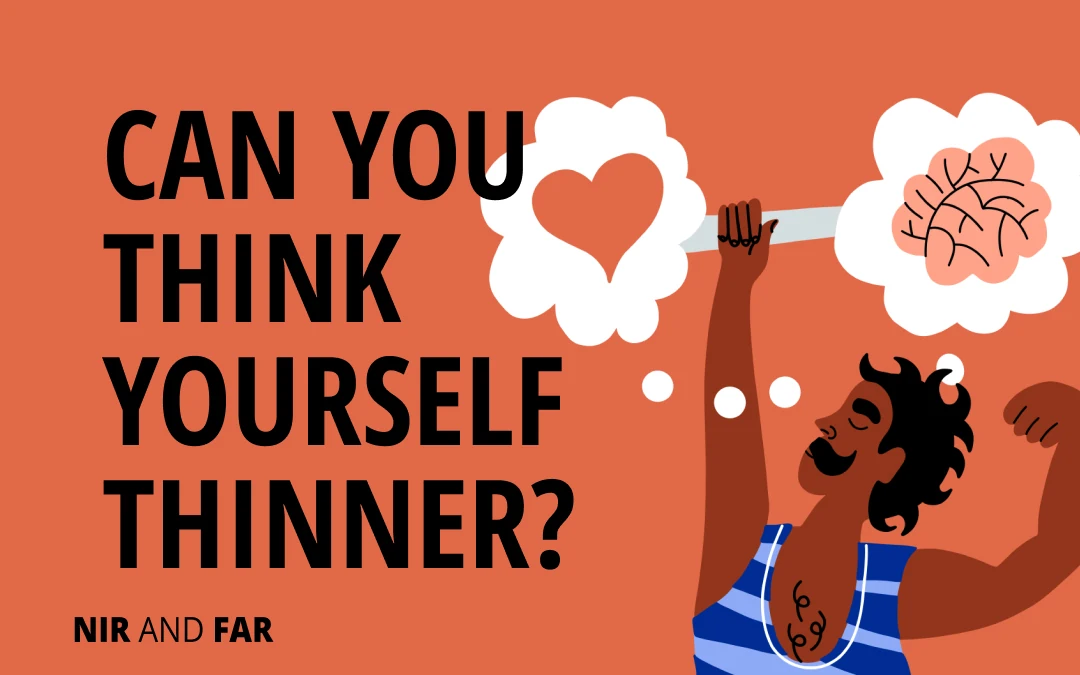As a clinically obese teen, my parents were desperate to get me to a healthy weight. My mom coaxed me on a walk through our boring, middle-class Central Florida suburb every Sunday.
The road we walked was paved with good intentions, but for me, it was hell: the heat and humidity, the painful chafing between my thighs, the inevitable embarrassment of applying Vaseline to said chafing. … If I was going to suffer, I would need a reward, and it had better be a good one!
The walks were never more than 30 minutes, but the finish line always ended at the Friendly’s Ice Cream shop. “Double scoop of chocolate with Reese’s Pieces, please!”
Needless to say, the walks didn’t help me lose weight. But here’s what did: On a family trip to New York City, I glimpsed in-line skates for the first time. This was the early 1990s, and they were still “a thing.” Stop snickering.
With all my extra pounds, I’d never won a race, ever. Whether on a bike, swimming or, of course, on foot, I was always dead last. But with Rollerblades, I’d glimpsed a hope of smoking my skinny friends.
They were way too expensive to buy, so I begged my parents to let me rent a pair for the afternoon. After a safety briefing at the rental shop and a skeptical look from the shop owner, I spent the rest of the day blading around Central Park, my parents trying to keep up. I felt fast! I felt free! Then, I felt exhausted.
I’d exercised for hours without realizing it. That night, I was so wiped out I slept through my body’s need to pee and woke up in a urine-soaked hotel bed. I hadn’t wet the bed in 12 years, but neither I nor my parents cared much. It was the first time they’d seen their kid enjoy exercise.
Looking back, those in-line skates (as dorky as they were) helped change my mind about fitness. Maybe exercise didn’t have to be a pain to endure, deserving of a treat. Perhaps the first step to health wasn’t extreme dieting or obnoxious goal-setting but a simple shift in perspective.
Turns out, decades of research reveal how our beliefs and expectations shape our bodies.
How Thoughts Influence Health
To investigate how mindset affects the relationship between exercise and health, Harvard psychologist Ellen Langer conducted a study of 84 female room attendants working in seven hotels.
These women spent their entire workday exercising—carrying vacuums up and down stairs and scrubbing bathroom surfaces—but in a survey, 67 percent said they weren’t physically active. A third said they didn’t exercise whatsoever.
Fascinatingly, Langer and her team discovered that the women’s health reflected their perceived, not actual, amount of exercise: Their physiological health variables, such as body fat, waist-to-hip ratio, blood pressure, weight, and body mass index, were correlated to the amount of exercise they thought they were getting.
Next, the women were separated into two groups: One was told that their work went above and beyond the Surgeon General’s recommendations for exercise. In contrast, the control group was told nothing.
After a month, Langer and her team remeasured the same physiological health variables in the women. They found that the informed group had lower blood pressure, weight, and waist-to-hip ratios—even though those women reported no change in their routines.
Langer concluded that their mindset caused the change. Critics of the study, however, say that because the women self-reported their routines and weren’t observed by the researchers, it’s possible they were more active or ate more healthily.
But this is a distinction without a difference. Either way, the women told to think of their work as exercise got healthier!
Even if they didn’t change their routines, the women in the informed group likely worked slightly more vigorously to burn more calories because they thought it mattered. Their health improved through a more positive outlook on their activity, perhaps motivating them to live more healthily.
“Thinking yourself thinner” doesn’t mean believing your mindset has the magical power to improve your health. You don’t have to believe that beliefs alone can change your body. Rather, belief is the first step in a reinforcing loop that increases your effort:
- Believing effort leads to improvement …
- …leads to believing you have agency to do something positive for your health…
- …which encourages you to put in more effort…
- …and results in a healthier you. That reinforces the efficacy of your original belief!
Nourish Your Mindset and Your Body
Banish Negativity
Be particular about the health and fitness content you give your attention to. Don’t subscribe to the idea of the “perfect” body on social media, and don’t let fitness gurus sell you quick-fix solutions for health and fitness, like fad diets and unsustainable exercise routines. Instead of trying to attain an unrealistic body type, focus on what healthy means to you.
Stop setting unrealistic goals and believing you’re failing. When it comes to life-long fitness, you should largely avoid goal-setting altogether. The better option is to build an enjoyable journey that has no destination. For example, cultivate a love of exercise and find activities that feel like more than just dreadful calorie-burning. Looking forward to an activity you enjoy can be life-changing, no matter how small. Have you tried in-line skating, BTW?
Invest in Positivity
Focus on traction, or action that takes us toward what we want. Too often, we focus on what we’re not doing rather than what we are doing to become healthy. You might diligently go for walks most days but dwell on your lack of high-cardio exercise. Give yourself some credit!
The Langer study illustrates just how much the women underestimated the physical activity they did each day. Do an audit of your daily routine and acknowledge the physically demanding activities.
According to the Mayo Clinic, people burn between 100 and 800 calories through daily activities like walking around the house doing chores, gardening, or even fidgeting—also called nonexercise activity thermogenesis (NEAT).
To give yourself credit, use my free habit tracker to record your exercise or healthy eating routines. Over time, it will help you visualize your progress and dedication, showing that you are giving your body what it needs.
The habit tracker can also help you avoid an all-or-nothing mentality. Many people think they must strictly adhere to healthy routines or not bother doing them. Eating fried chicken for lunch might lead you to write off the entire day as unhealthy, even if you made other good choices.
But the habit tracker forces you to see all your healthy choices, reinforcing your belief that you’re doing well by your body.
Sneak in Exercise
- Turn cleaning your house into a workout by playing music and cleaning quickly.
- Instead of inviting a friend to a movie, dinner, or a drink, suggest an outdoor activity like walking, hiking, or biking. You can even join a social sports team together!
- Take the stairs instead of the elevator or escalator.
- Get a standing or walking desk.
- Do squats while you floss or brush your teeth. It only takes two minutes to brush or floss, allowing you to work your leg muscles twice daily.
- When you drive somewhere, park farther from the entrance so you walk a little more.
- If you take public transportation, get off a stop earlier and walk the rest of the way.
- For destinations that are 30 minutes away or less by foot, walk instead of drive.
Every little bit counts.
If you think you hate exercise, the best thing you can do is find a positive mindset. Take stock of what you’re already doing. Find an exercise that doesn’t feel like a workout.
When in-line skating became outmoded, I took up running—and made it fun and more exciting by going barefoot. Doing something so contrarian and weird makes it more enjoyable for me and reminds me that exercise can be made your own. Today, at 46 years old, I’m in the best shape of my life.
Your mindset can shape your body more than you know. It’s not about magical thinking but about recognizing the power of belief as the first step toward positive change. Small shifts in perspective can lead to big changes in your health and well-being—you better believe it!
Related Articles
- Schedule Maker: a Google Sheet to Plan Your Week
- Habit Tracker Template in Google Sheets
- A List of 20 Values [and Why People Can’t Agree On More]
- Timeboxing: Why It Works and How to Get Started in 2024
- An Illustrated Guide to the 4 Types of Liars
- Hyperbolic Discounting: Why You Make Terrible Life Choices
- Happiness Hack: This One Ritual Made Me Much Happier

